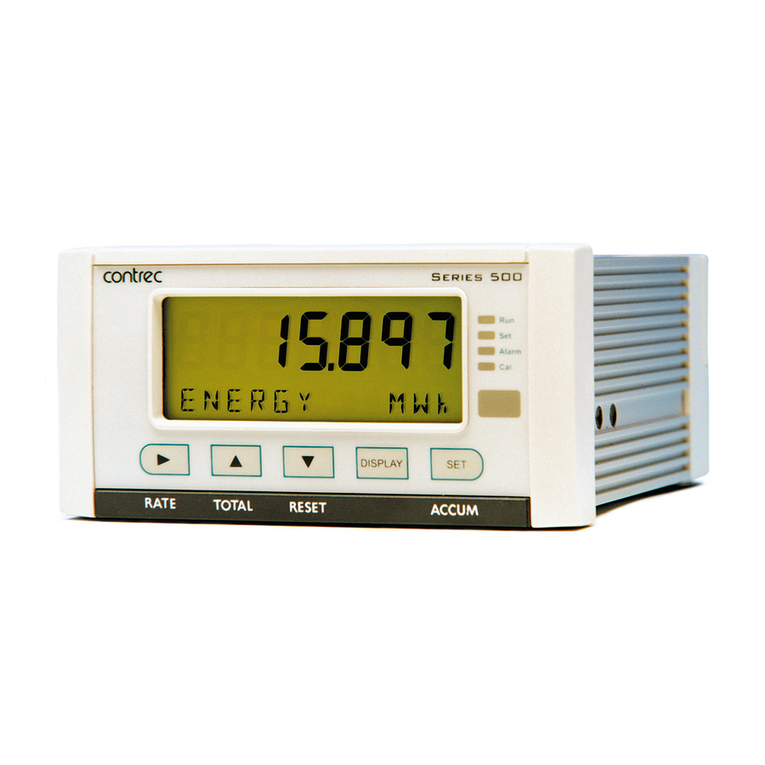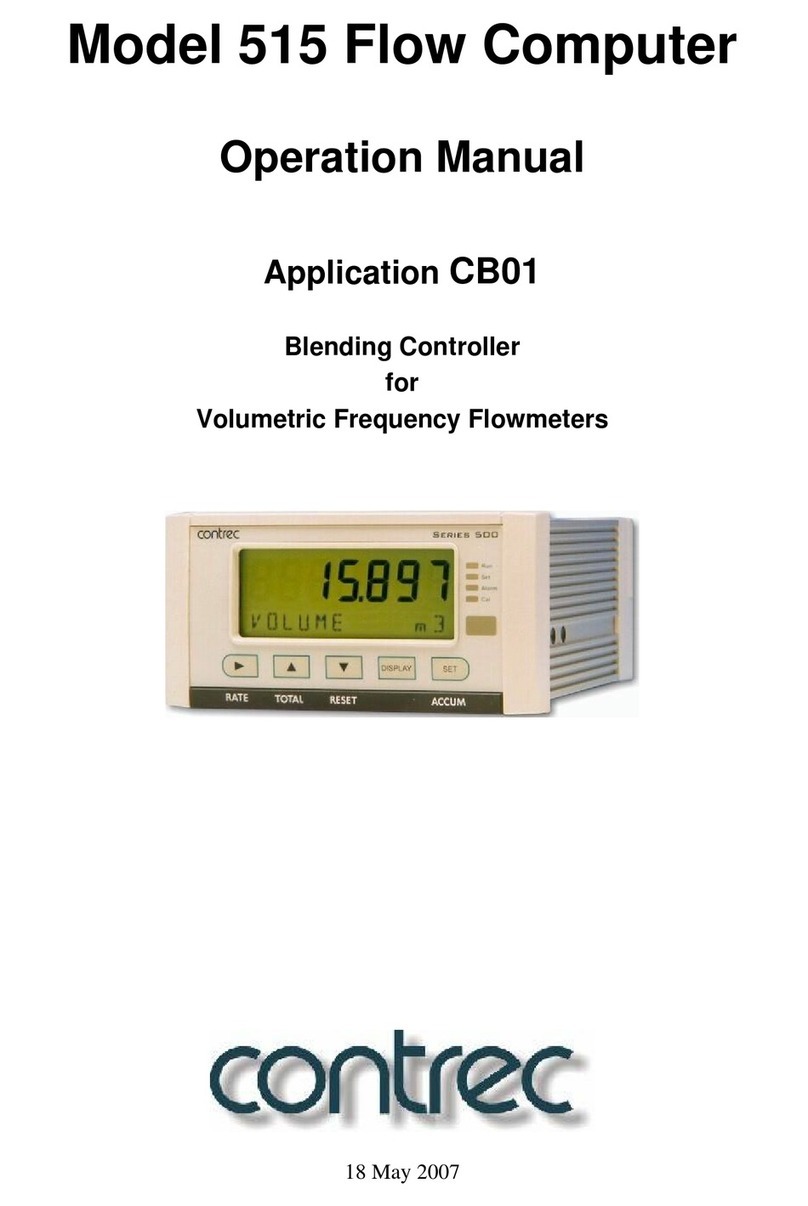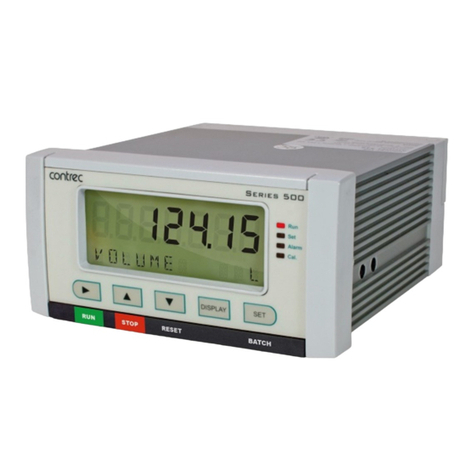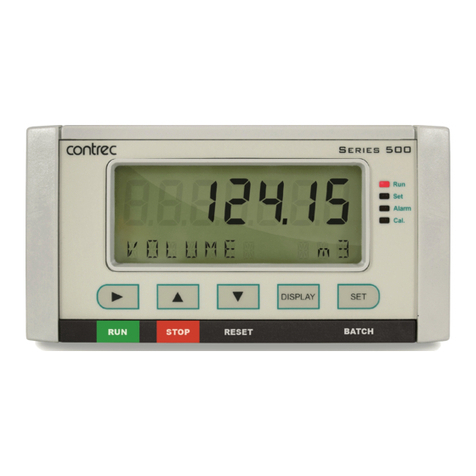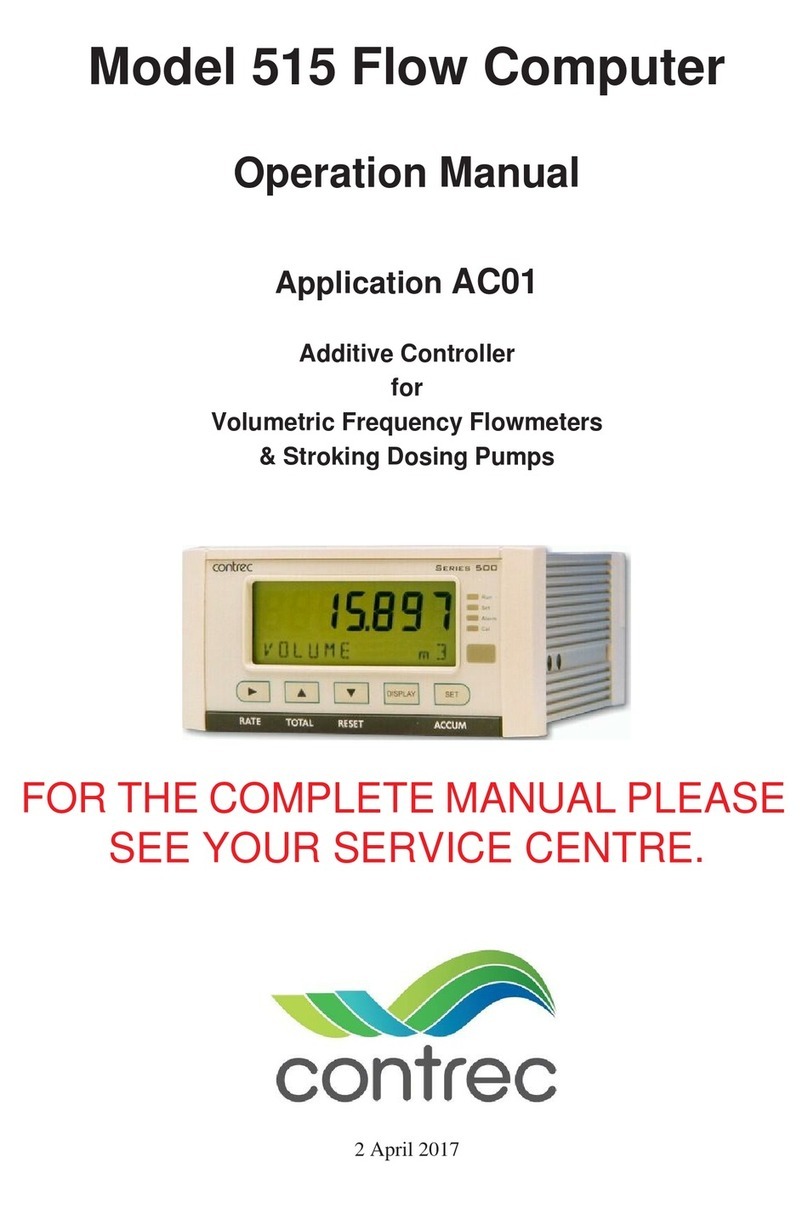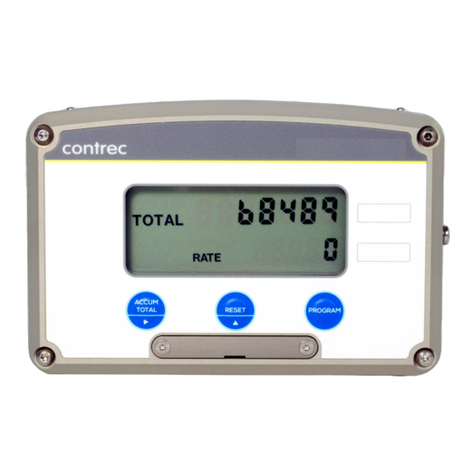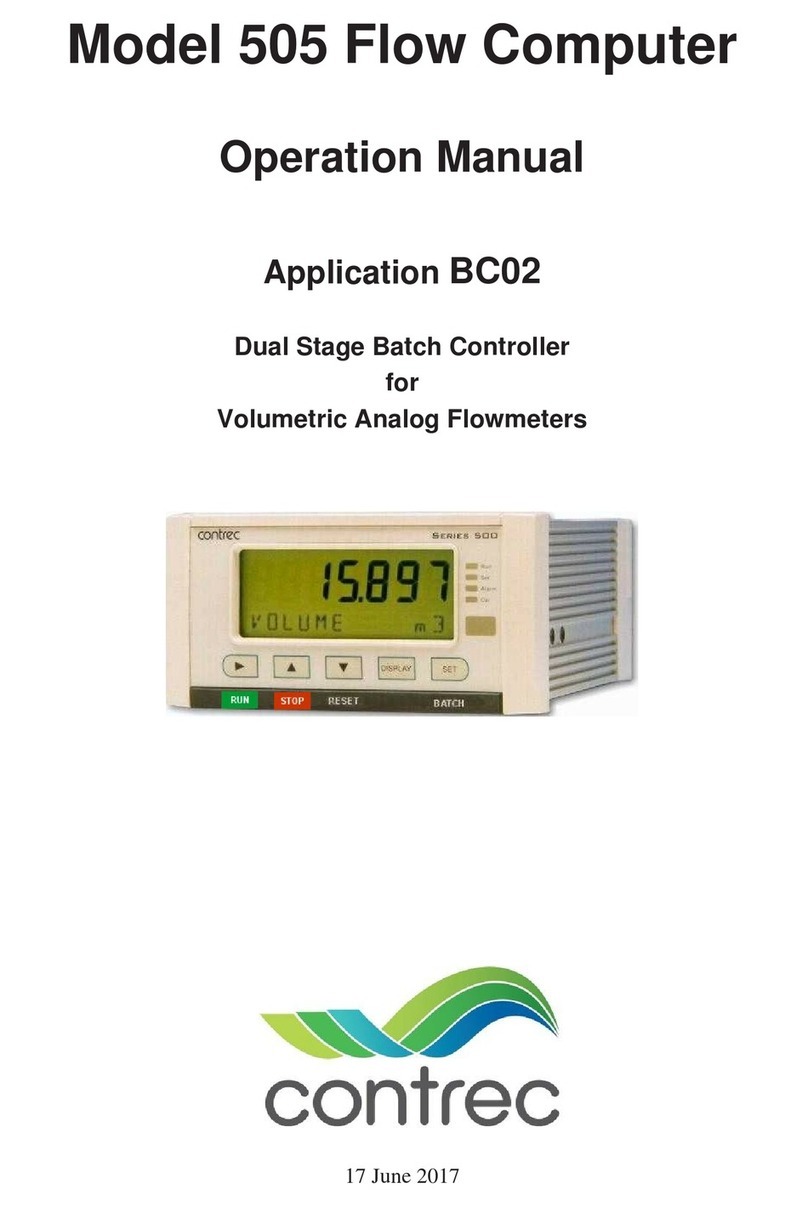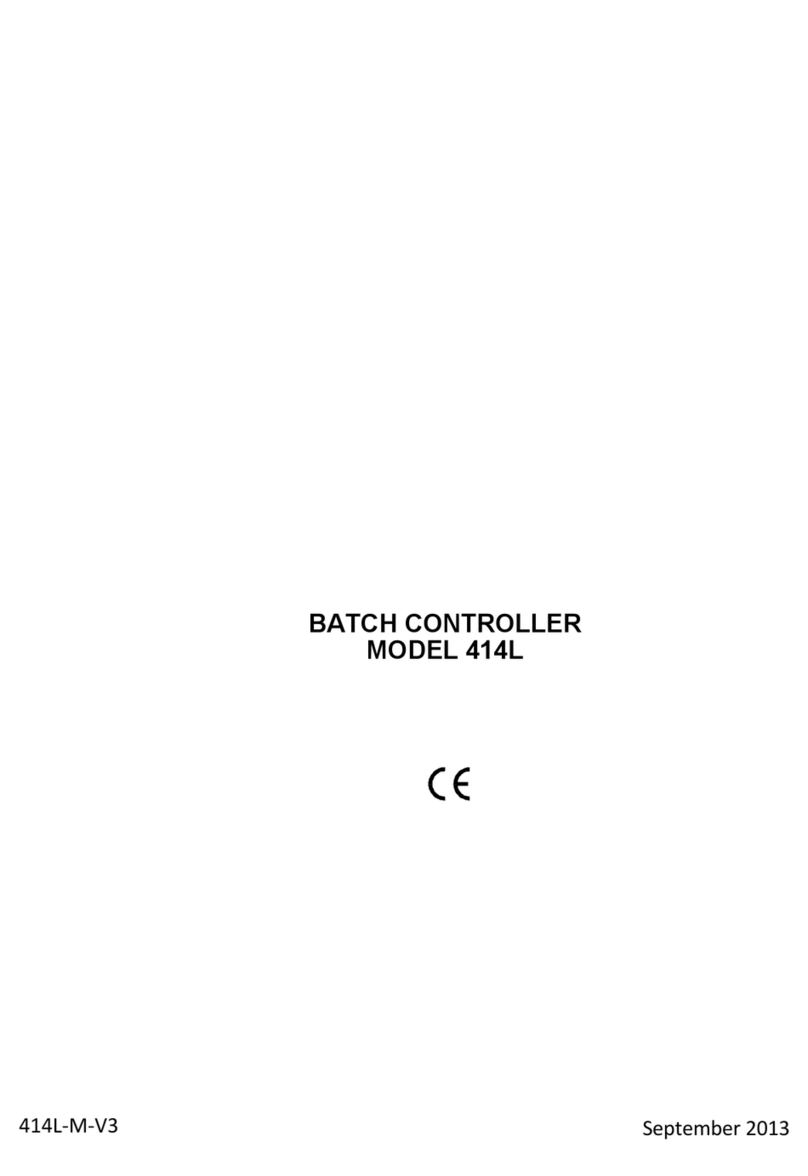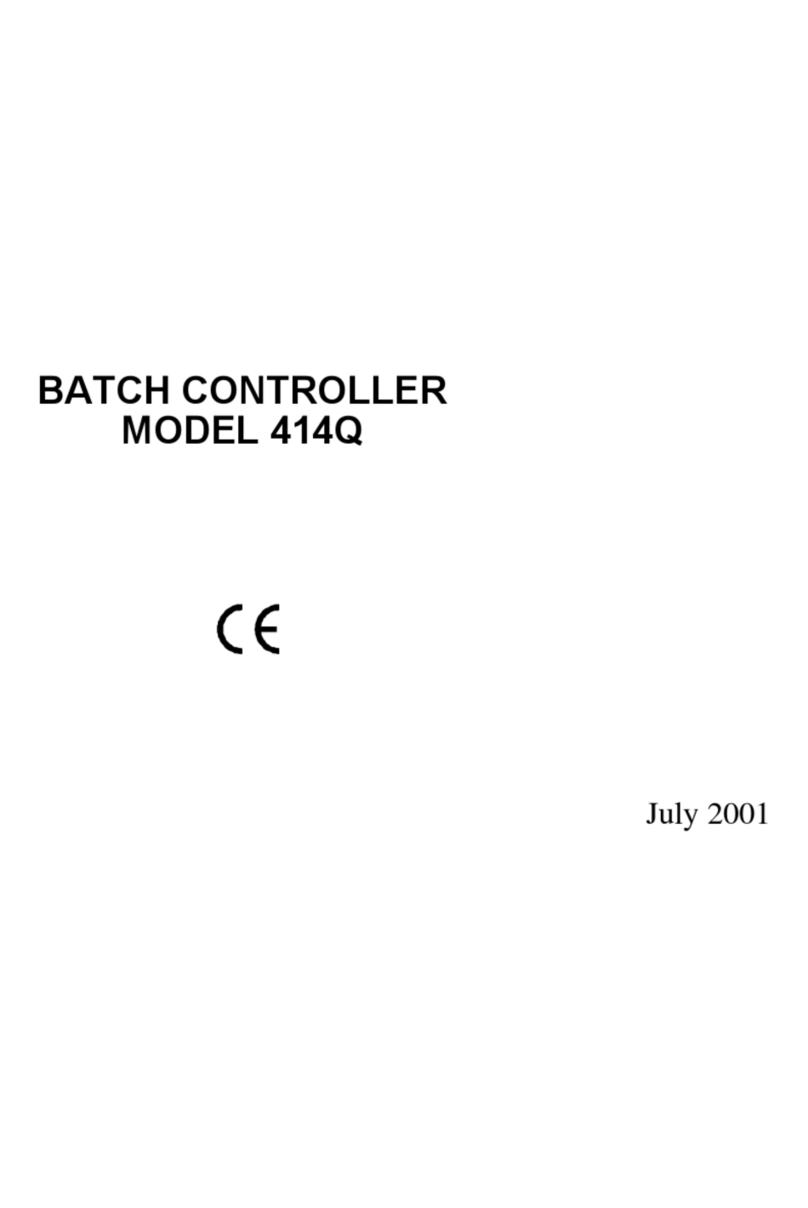
Introduction 1
MAN-114D-V1.3 6
1. INTRODUCTION
The Model 114 Batch Controller is a microprocessor based instrument which
accepts a frequency or pulse input from a wide range of flowmeters and
automatically controls the batching of fluids via a one stage or two stage control
valves. The instrument displays the Preset value, a Resettable Batch Total and an
Accumulated Total directly in engineering units.
The Model 114 is fully programmable from the front panel; the user can program
scaling factors, decimal point positions, valve delays and signal timeouts.
The instrument is compatible with a wide range of flowmeters. Links on the input
board enable the circuit to be configured for millivolt signals, reed switches,
Namur proximity switches and most other signal types.
The instrument is housed in an attractive polycarbonate enclosure which is
completely watertight. A universal bracket is supplied as standard for wall
mounting while optional pipe or panel mounting brackets are also available.
The Model 114 Batch Controller conforms to the EMC-Directive of the Council of
European Communities 2014/30/EU, the LVD directive 2014/35/EU and the
following standards:
EN61326:2013 Electrical equipment for
measurement, control and
laboratory use –EMC requirements :
Residential, Commercial & Light
Industry Environment & Industrial
Environment.
EN61010:2010 Safety requirements for electrical
equipment for measurement,
control, and laboratory use.
In order to comply with these standards, the wiring instructions in Section 9.5
must be adhered to.
